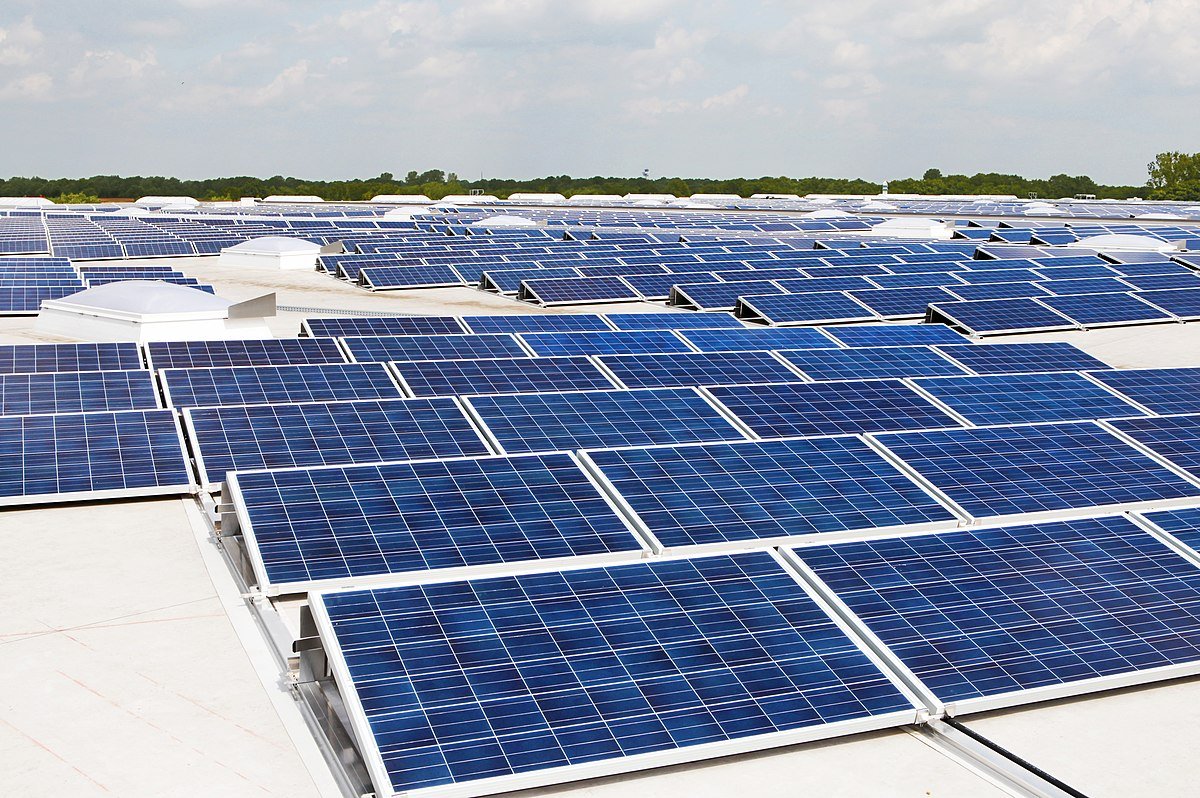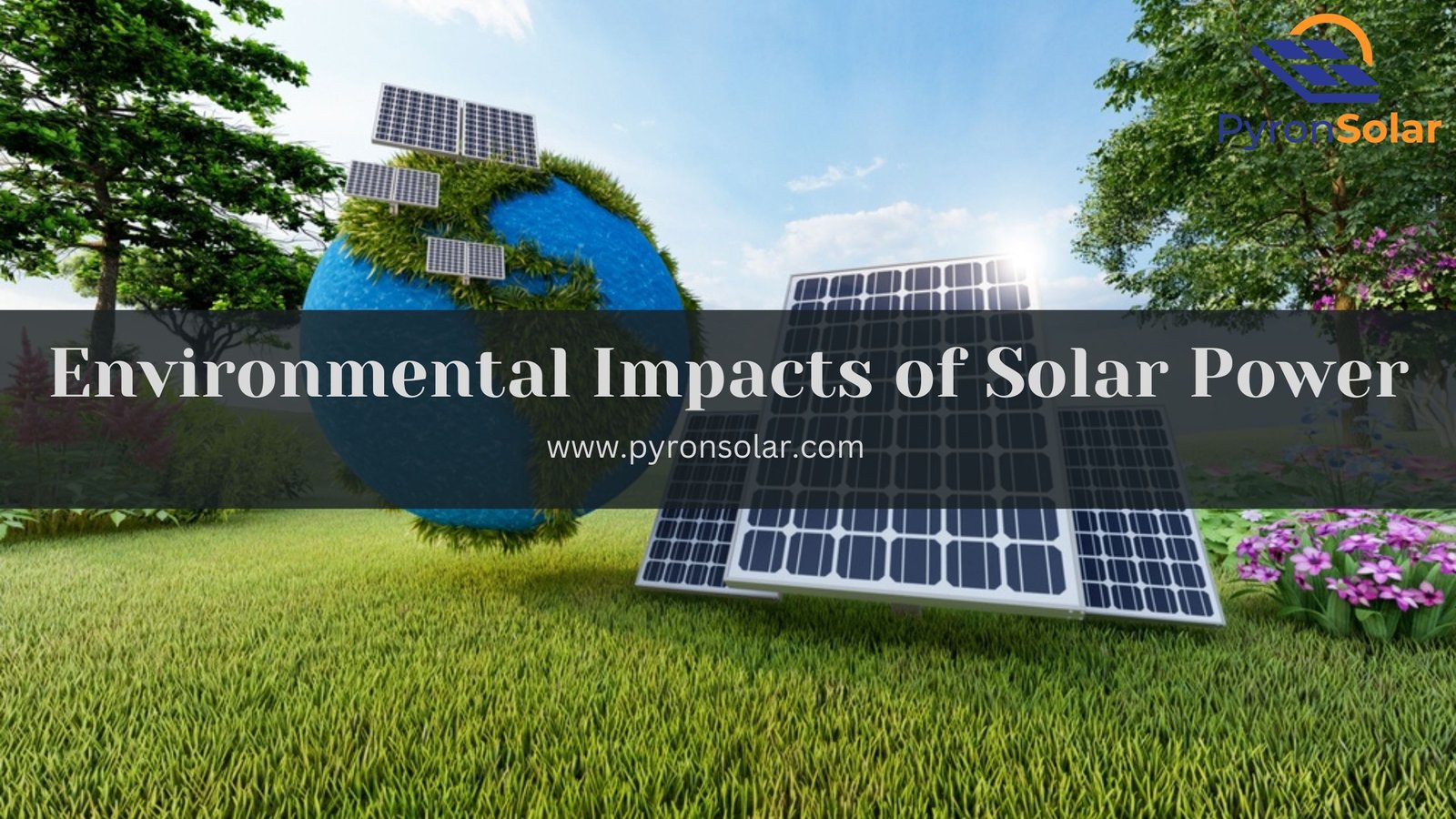Solar energy is an endlessly renewable resource that is swiftly transforming the world by acting as a sustainable alternative to fossil fuels. But you must know how exactly it works and what impact it has on the environment we live in. We will discuss many positive as well as negative environmental impacts of solar energy.
We know that solar energy captures the sunlight and converts it into usable electrical energy. It uses a medium such as Photovoltaic (PV) Panels to directly absorb sunlight and generate electricity or Concentrated Solar Power (CSP) plants to focus sunlight on a particular object and create heat.

The importance of solar energy has proven crucial, especially during global warming and climate change threats. Surprisingly, there are 12 Million Homes that are solar-powered in the US. Also, it indicates that solar panels are becoming more affordable and efficient, capable of generating electricity to power more than 10 Million Homes per year.
Many other experts have predicted that by the next decade, a fourfold increase in solar panels could be witnessed. However, it promises a much more sustainable future. But this isn’t the complete concept. Let us indulge deeper into the environmental impacts of solar energy and explore its potential to reshape our world.
What Are the Positive Environmental Impacts of Solar Energy?
Unlike fossil fuels, not releasing harmful pollutants in the air is just one of many positive effects of Solar Energy on the Environment. The major change we needed was not to rely on fossil fuels. Hence it fulfills that criteria as well as keeps us equipped to face climatic changes.
For instance, a Large-scale solar farm will have less land disruption compared to the olden energy resources. Also, it will not disturb wildlife habitats.
Reduction in Greenhouse Gas Emissions (GHG)
Solar energy ensures a reduction in greenhouse gas emissions (GHG) and is a champion in various terms of sustainability.
GHG emissions occur with Traditional methods of producing electricity. It includes the combustion of fossil fuels including oil, coal, and natural gases that produce harmful Carbon dioxide (CO2) in excess with a small ratio of methane (CH4) and nitrous oxide (N2O).
Being a renewable source, solar energy produces zero emissions while producing electricity and greatly reduces carbon footprint. Every kWh generated by solar energy is a stepping stone to success towards a clean environment and a healthy future.
Reduction in Air Pollution
The Environmental Protection Agency (EPA) in the United States is taking necessary measures for Reduction in air pollution. According to the US reports, the air emissions are caused by electricity generation which is the largest industrial source right now.
Fossil Fuel-powered large-scale plants are the reason for man-made emissions of carbon dioxide (CO2) up to 40%, nitrogen oxide (NOX) up to 24%, and sulfur dioxide (SO2) up to 60% of the nation’s overall emission.
Therefore Solar energy has played a very important role of Reduction in air pollution with zero emissions and preserving the quality environment for the next generation.
Rapid Technological Advancements
Research and Technological Advancements have made solar panels more efficient and better for the environment. Here are a few useful innovations such as:
- Longer-Lasting Solar Cells
- Pyramidal Lenses
- Perovskite Semiconductors
- Insolight’s Panel Coating
- Solar Shingles (Roofing Materials)
- Photovoltaic Solar Windows
- Sun-Tracking solar cells
Therefore, Solar Energy has been constantly proving its importance since the time of its discovery. The most positive point is that the Sun’s energy is eternal and endless! Whereas, fossil fuels cause a fear of running out at any time. Hence, Solar Energy was, is, and will continue to be the best sustainable solution for the upcoming generations.
What Are the Negative Effects of Solar Energy on the Environment
Besides many positives, there are negative effects of solar energy on the environment that you need to know. However, the Research and development team is about to address these issues and progress better. It includes the development of a clean manufacturing process, improved recycling technology, and minimized land use.
Here are the Negative Effects of Solar Energy on the Environment:
The Environmental Impact of Manufacturing
During the extraction and processing of Raw materials like Silicon Environmental Impact of Manufacturing is observed. It harms the water and air quality because of mining and emissions. Also, material transportation over long distances leads to carbon emissions. You can learn more about how solar panels are made and their environmental impacts.
Hazardous Materials Used
Solar panels contain heavy metals which are also Hazardous Materials such as – Lead, Cadmium, and Arsenic. It has to be handled properly during manufacturing, usage, and disposal or else it could cause great harm. Even a slight leakage of these materials can pollute and completely degrade the water and soil.
Disposal and Recycling Challenges
Since it is the early stages of solar panels, many Disposal and Recycling Challenges are popping out which could lead to problems in the future. However, by 2030, solar panel wastes are expected to be challenging against safe and responsible disposal.
Land Use and Habitat Disruption by Solar Farms
Large solar farms use a lot of land and can disturb wildlife habitats. Clearing land for solar farms can cause soil erosion. The panels also reflect sunlight, which can confuse birds and affect their migration. If you’re thinking about investing in solar farms, you should find out, “How much do solar farms cost?”
Excess Use of Water
Solar panels are less water-intensive compared to other energy sources. However, cleaning solar panels requires excess use of water. It affects the environment, especially in dry regions creating strain on local water resources.
It is always important to maintain a balance between the environmental benefits as well as making responsible developments with proper strategies.
Are Solar Panels Sustainable?
The answer is both YES and NO! Solar panels are sustainable but not without drawbacks and challenges. Let us compare it to the traditional predecessor – fossil fuels:
| FEATURE | SOLAR PANELS | FOSSIL FUELS |
| Type of Resource | Renewable Source
(Sun Light) |
Non-Renewable Source
(Coal, Oil, Gas) |
| Environmental Impact |
|
|
| Cost | High upfront & Low functioning | Lower upfront & volatile functioning |
| Reliability | Depends on Weather
(Amount of sunlight) |
Consistent and Readily Available |
| Scalability | Modular & can be installed anywhere | Large-scale infrastructure is required |
| Long-term Cost | Decreasing Cost & Technology Advancement | Keeps Fluctuating based on market & resource availability |
| Future Availability | Abundant and Sustainable | Limited and Depleting |
Now that we have a clear comparison of Solar Panels vs Fossil Fuels, you might ask “Are the solar panels fully sustainable?” Not yet! However, they are leaping towards success and progression compared to fossil fuels. Also, research and development are working to make it more eco-friendly.
As of now, Solar panels are set on the right track! But further improvements are needed to successfully reach a sustainable destination.
{Video Credit- UC Davis}
What is the Future Of Solar Energy?
The future of solar energy depends on the practices and advancements at present. Also, a few considerable improvements are to be made. Here are the factors which decide the future of solar energy.
Current Practices and Advancements made to improve solar panels are:
- Research to use recycled materials that are the best alternatives in panel production.
- Closed-loop system implementation during production to minimize water usage.
- Perovskite Solar Cells have higher efficiency and lower production costs.
Ways to Improve Solar Panels in the Future:
- Cleaner Manufacturing methods are followed by Leading companies like JinkoSolar and Hanwha Q CELLS. Their production process is eco-friendly as they use recycled materials and less water.
- As of now, Current efficiency is around 19-22%. However, it is expected to reach more than 30% in the next 10 years with the help of Perovskite-based technologies.
- Large-scale recycling is crucial as only 10% of panels are recycled at present. Companies like First Solar and SunPower are developing closed-loop recycling methods to minimize waste.
- US Government Regulations and incentives are necessary for responsible manufacturing and recycling.
Recycling Companies and how they recycle:
- Recycle Solar is the pioneer company that follows responsible recycling and redirects panels from dumps.
- ROSI is another leading company that comes up with innovative ideas to regain usable materials.
As of now, only around 20% of solar panels are recycled, while the rest are going to landfills and dumps. It has to be resolved immediately to minimize waste.
By following perfect practices, having advanced technology, and pushing large-scale recycling, we can expect solar energy transformation into a clean source of power. Remember, every innovation and panel recycling walks us to a clean future.
In case if you want to know more about the future of solar energy and how solar industry will look like in future.
Are Solar Panels Bad for the Environment?
NO, Solar Panels are not bad for the environment as they have a positive impact compared to traditional fossil fuel-powered sources. However, there are a few negative points too which are mentioned in detail below:
Positive Impacts:
- Renewable and Abundant resources
- No GHG emissions
- Clean & Environment
- Helps face climatic changes
- Improves Air Quality
- Human Health is safe
- Reduced Reliance on Fossil Fuels
- Minimal Land Use
Negative Impacts:
- Raw Material Mining generates pollution
- Solar Panel improper recycling
- More Land use for Large-scale solar farms
- Affects Wildlife and ecosystem
Solar Energy can become more environmentally friendly by properly using production techniques to reduce carbon footprints. Also, it must develop advanced recycling technologies that are cost-effective and minimize waste.
Importantly each home and business place must come forward to adopt solar power. It would be an excellent option not to rely on large-scale farms and traditional methods.
Though solar panels have a slightly negative impact or few considerations to be made, the positive points are far ahead and overshadow them completely. Solar Panels can be much better by improving the manufacturing and recycling process.
{Video Credit- Los Angeles Times}
How Do Solar Panels Help the Environment?
Do you know the energy that we are using is just smokestacks? Meanwhile, Solar panels are helping the environment by providing energy directly from the Sun and benefiting in several ways:
- Solar panels do not release harmful gases like carbon dioxide.
- Fossil fuels are limited and depleting, but sunlight is abundant and renewable.
- Avoids environmental damage due to fossil fuel extraction.
- Clean Environment, Healthy Lungs, No Smoke in the air, and reduced respiratory issues.
- A sustainable and reliable source of power. You don’t have to worry about it running out (unlike fossil fuels).
Therefore, switching to solar panels is like welcoming a cleaner future! No pollution, No Health issues, and most importantly a sustainable future for everyone.
Ray is an avid reader and writer with over 25 years of experience serving various domestic and multinational private and public energy companies in the USA.

